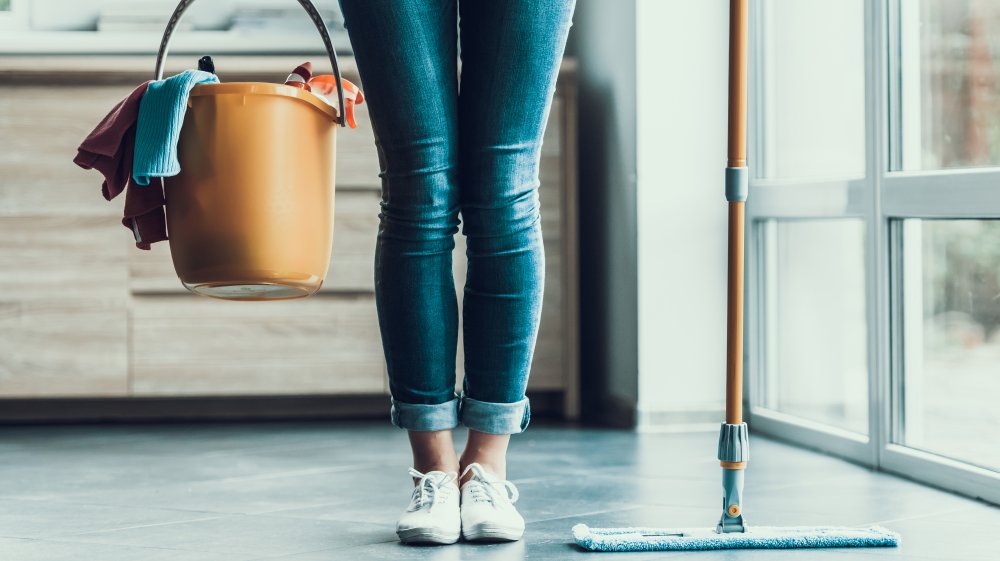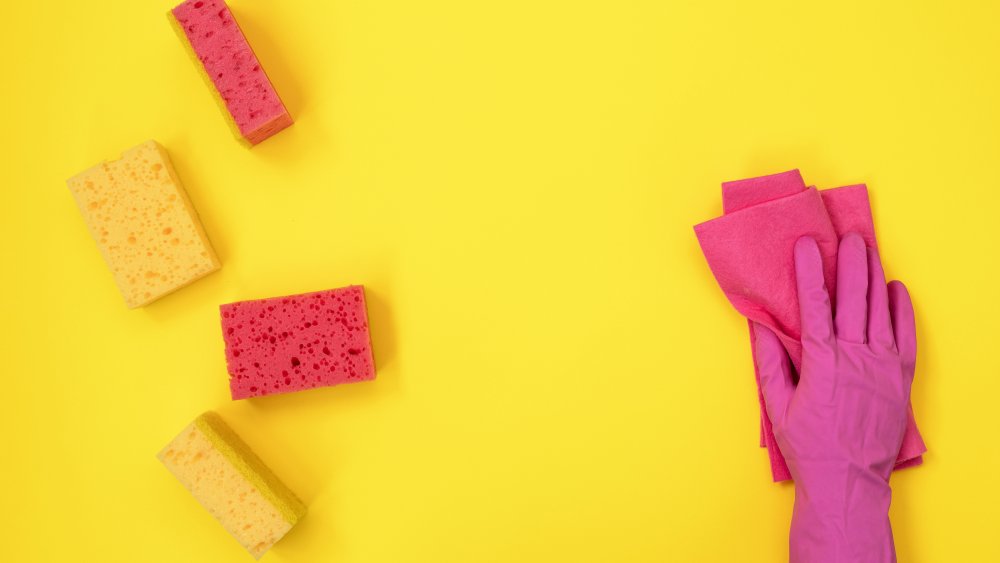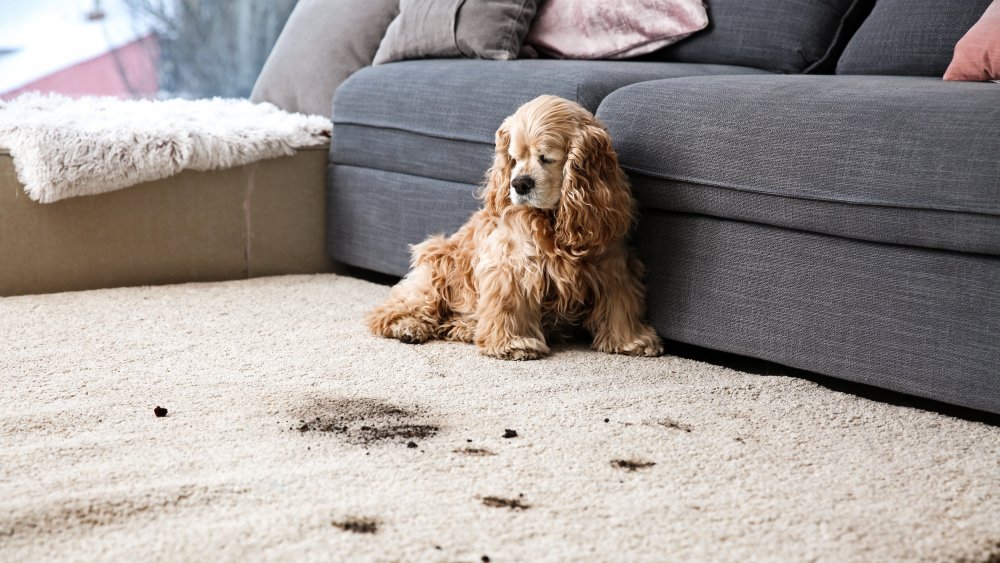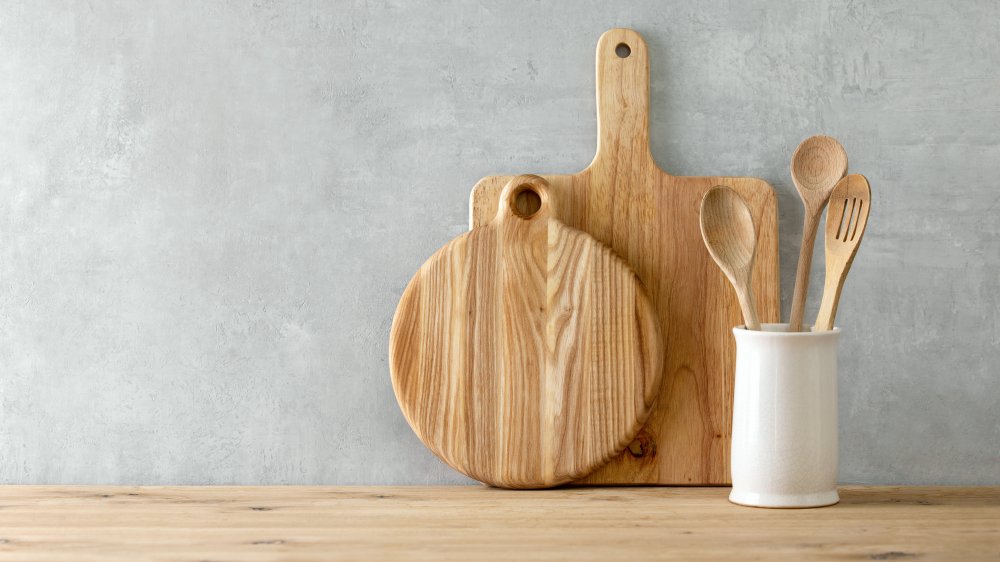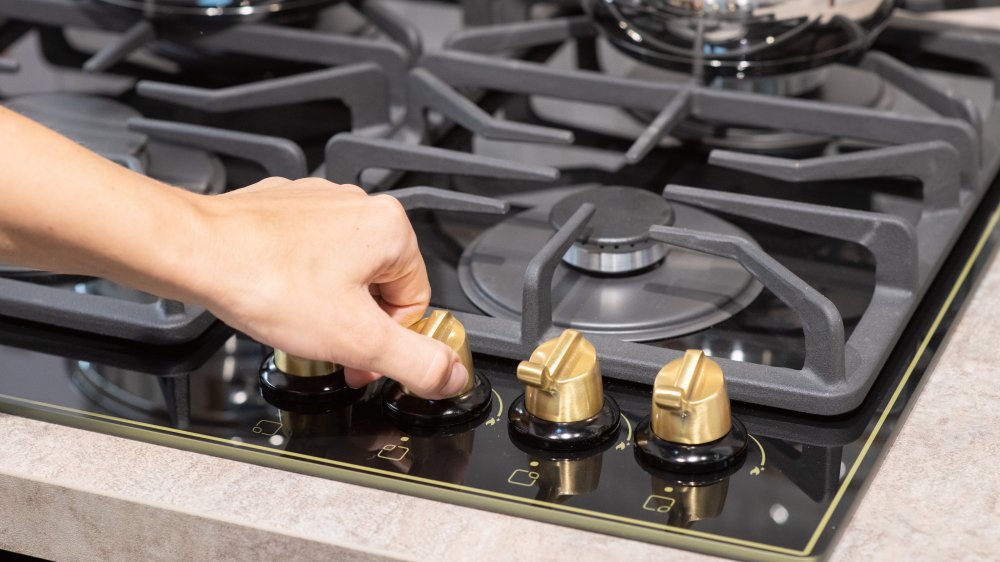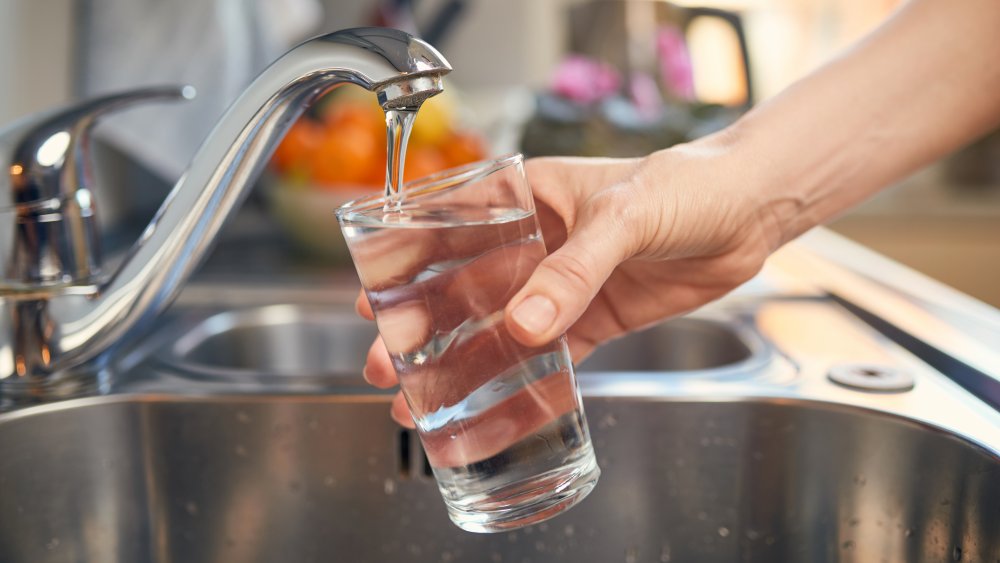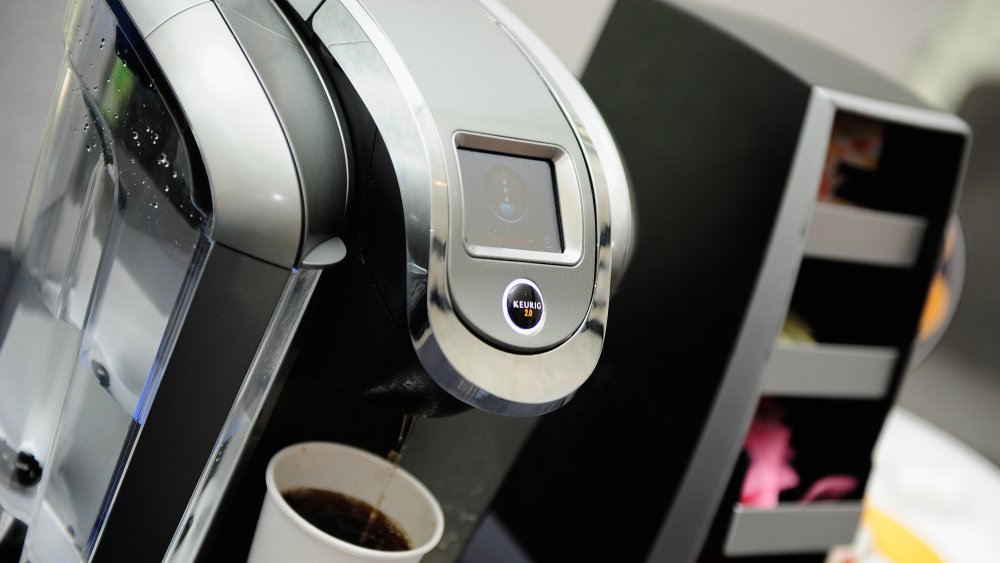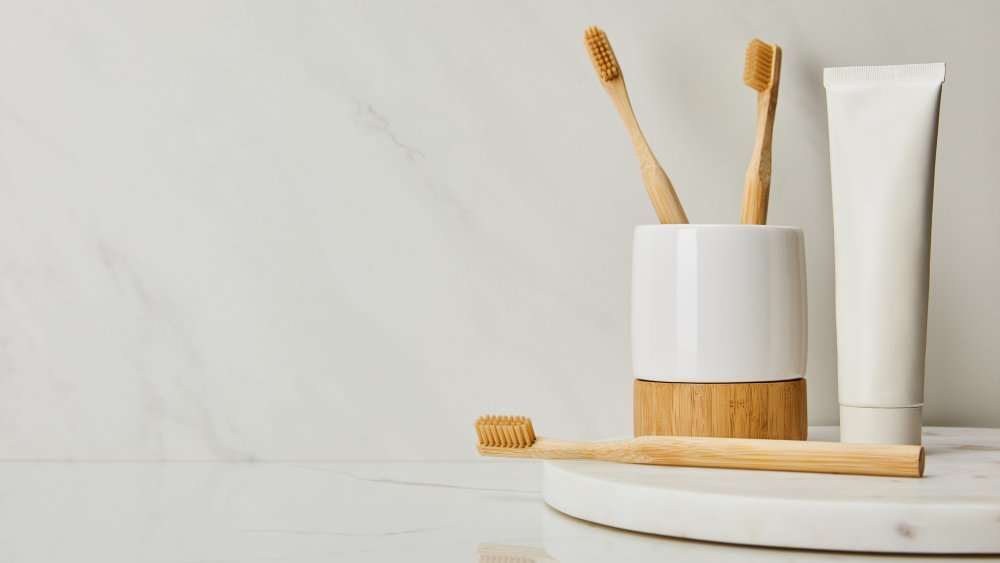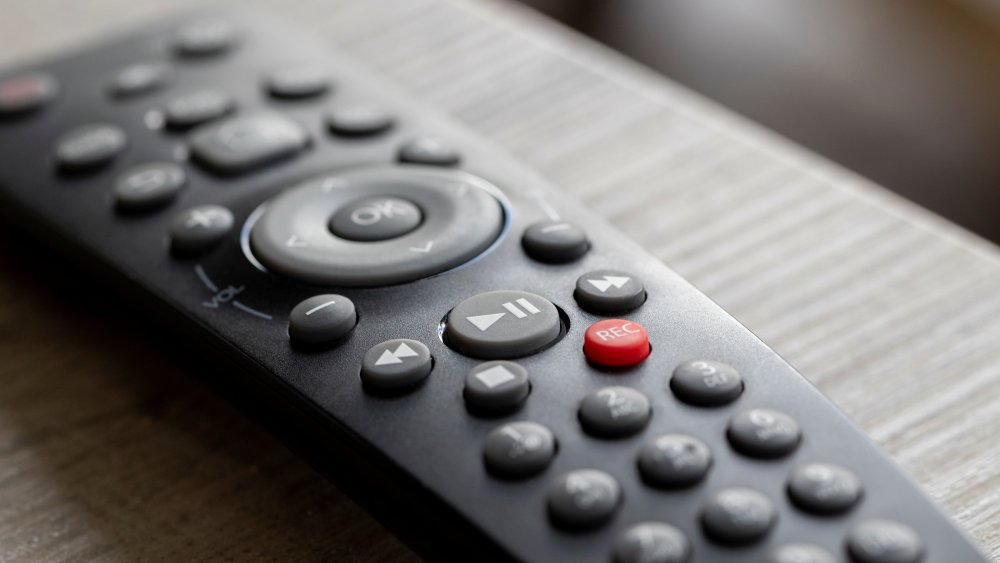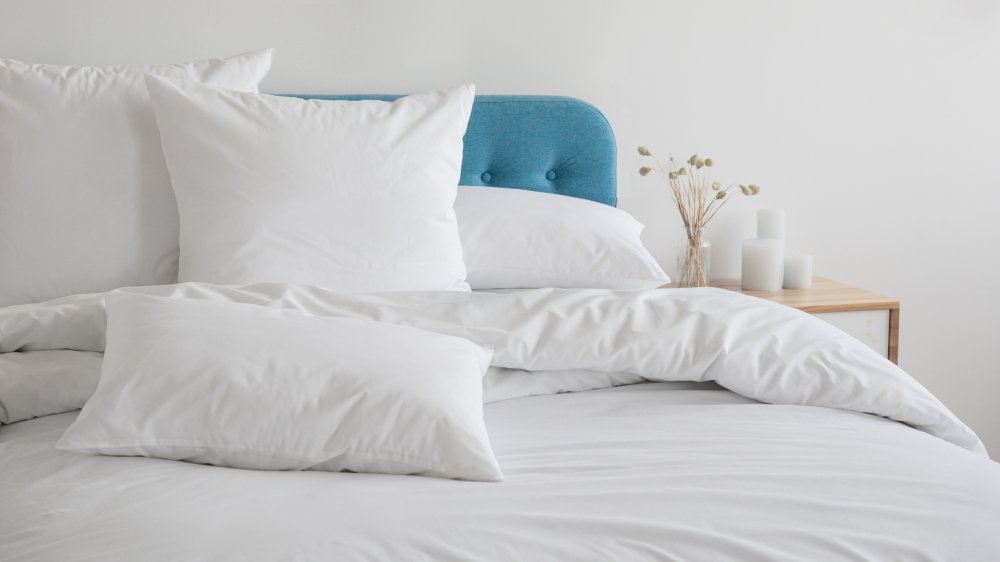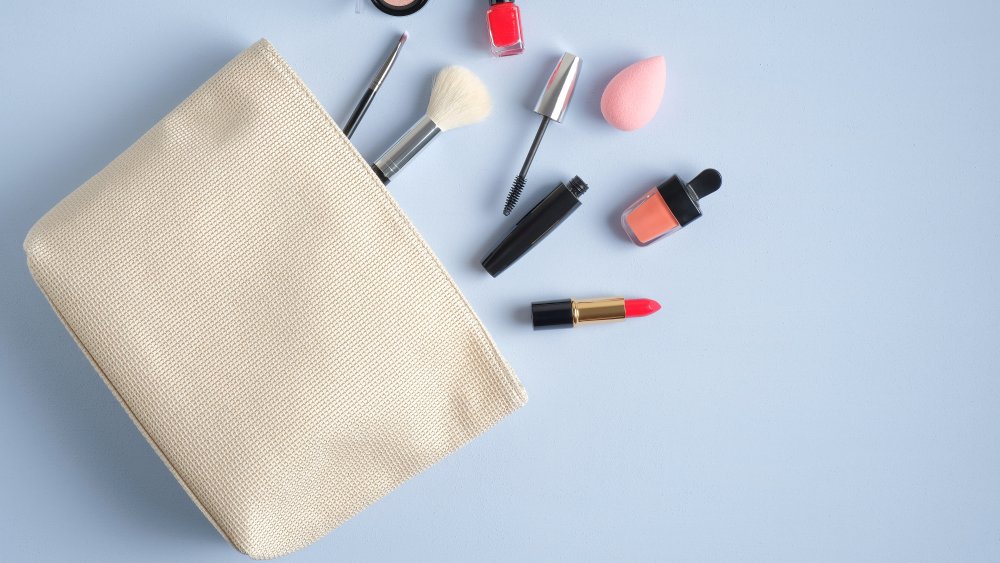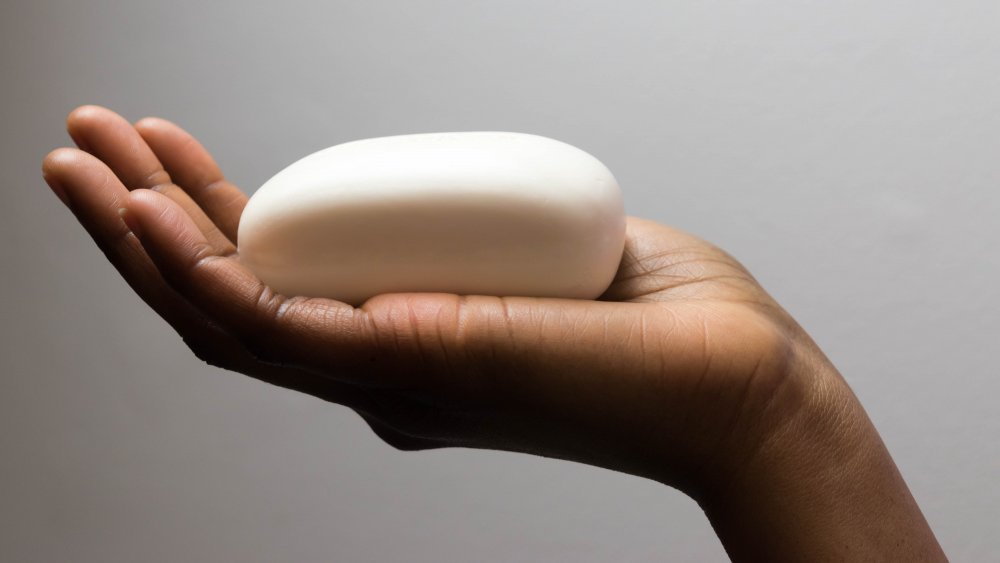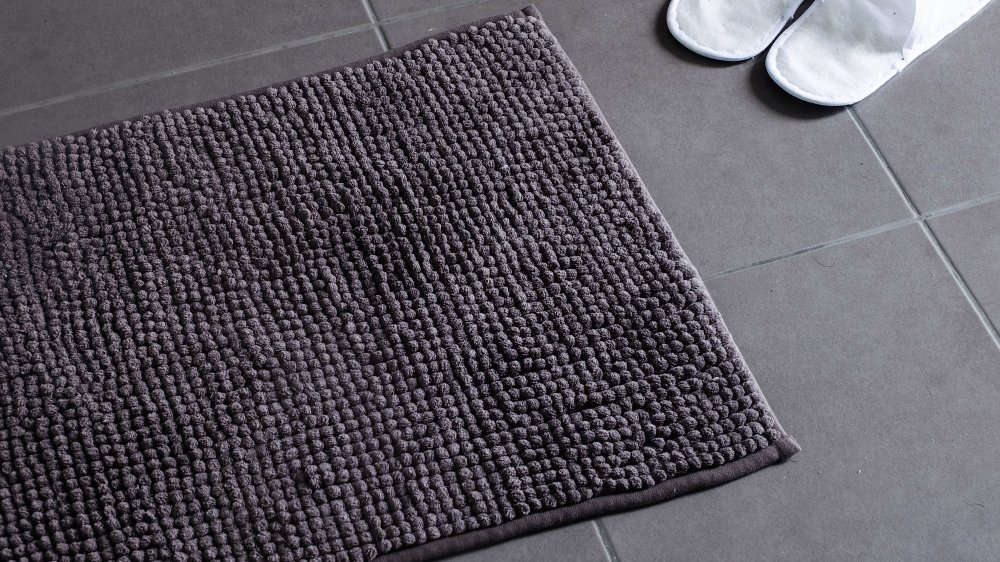Germy Things In Your House You're Definitely Not Cleaning Enough
Germs seem to always find a way to invade the house — even if you consider yourself a very neat and clean person. Maybe you vacuum regularly, keep up with the laundry, and use some serious elbow grease when wiping down surfaces. While you may be a diligent disinfecting machine, you are most likely neglecting a few germ-ridden spots in your otherwise happy, healthy home.
Indeed, there are some common nooks, crannies, and household corners that are especially guilty of harboring bacteria, mold, and all sorts of dangerous pathogens. For starters: When was the last time you replaced your pillows? Have you ever really scrubbed out your toothbrush holder? And what about the pieces and parts of your coffee maker? We didn't think so.
Don't fret; Health Digest is here to help. So before you get out the bleach and indiscriminately start panic scrubbing, take a breath and a beat to read up on all the germy things in your house you're definitely not cleaning enough — plus, learn a few nifty tips to help you up your sanitizing game. You've got this!
Sponges and dish cloths
Before you hand wash your next load of dishes or scrub your grimy counter tops, take pause and remember this: Your sponges and dish cloths are, well, utterly disgusting. Think of everything you've wiped down with that same seemingly "clean" sponge.
Philip Tierno, microbiologist at NYU's School of Medicine explained told Business Insider that "you're cleaning up vegetables, carcasses of meat, and all sorts of food stuff that can potentially contain pathogenic bacteria that will grow in numbers over time." And a damp environment adds fuel to the filthy fire. "Even if you rinse it and use some soap, it's not sufficient to eradicate the germs," Tierno told the site.
So how can you actually get your sponge clean enough to do its job? Tierno recommends soaking it for 30 seconds in a solution of one part water to nine parts bleach; this nifty trick is even more effective at sanitizing than microwaving. While you're at it, throw that dish rag in the wash. A study published by the American Society of Microbiology found that 49 percent of kitchen towels have icky bacteria growth — making it a source of cross contamination and possible food poisoning.
Your carpets and rugs
Think of all the gross things you track in on your floors and rugs when you enter the house. Good luck keeping dirt, mud, and, yes, feces off your shag. Don't believe your rug could be that ratty? Research cited by Men's Health found that your plush carpeting has "about 200,000 bacteria per square inch, making it 4,000 times dirtier than your toilet seat." Yes, your wall-to-wall carpeting is a breeding ground for all sorts of nastiness with shedded skin cells acting as "food for germs." Then you've got crumbs, allergens, pet dander, and whatever else the cat (or dog) dragged in — literally. Microbiologist Philip Tierno Jr. told the magazine that rugs are basically "botanical and zoological parks."
Furthermore, as pointed out by the publication, your vacuum cleaner isn't the foolproof answer, as it probably isn't able to get to the very bottom of the carpet — so there's still a plethora of staphylococcus, E. coli, and other goodies lingering down there, just waiting for its chance to pop up and infect something or someone. So what's a germ-conscious carpet lover to do? Hire a service to deep clean your soft surfaces at least once a year, per the article.
Cutting boards
You chop veggies, cut meat, debone fish, and peel fruit on that trusty wooden cutting board of yours. What you may not realize is that while you are slicing and dicing and serving up culinary masterpieces, you are also potentially setting yourself (and your guests) up for a nasty case of food poisoning. Cross contamination is a big part of the problem, and so is improper sanitation.
It's important to note, per North Carolina State University, that not all cutting board surfaces are created equal. While easier to sanitize, plastic cutting boards are more vulnerable to "grooves where bacteria can thrive." Wood, on the other hand, is more difficult to sanitize, but is more durable and less likely to suffer damage. This is why Ben Chapman, a food safety researcher at NC State, suggested using designated plastic cutting boards (that can be thrown in the dishwasher) for meats and proteins, and opting for wood ones for fruits, veggies, and such.
Stove knobs, door knobs, fridge handles, and faucet handles
Your kitchen is a busy hub of activity. It is your dinnertime domaine, after all, and you have to get all the prep work done to serve up a gourmet meal. But while you are running around opening fridge doors, turning stove knobs, and feeding hungry people, you could also be spreading lots of foodborne illness-causing germs.
According to Northwestern Medicine, 26 percent of refrigerator door handles are teeming with bacteria. While viruses generally last less than 24 hours on a hard surface, like a handle, as noted by Science Focus, certain bacteria can live much longer — we're talking weeks to months — leaving you susceptible to all sorts of unpleasantness.
Luckily, there's an easy fix for this yucky problem. Wipe down hard surfaces with disinfectant daily or after each meal — just like you would your counters, as recommended by The Kitchn.
Your kitchen sink
Running the tap on your kitchen sink perpetually chases all those pesky germs down the drain, right? Wrong! Turns out you need to up your faucet disinfecting game, too. A study in the Journal of Applied Microbiology found that kitchen sinks are quickly populated with many coliforms, a type of bacteria, in just one week's time.
Furthermore, the publication found that these same kitchen sinks can also be swarming with Salmonella. This can happen all too easily if you rinse meat prior to cooking. "Washing raw chicken before you cook it leaves germs in the sink that may contaminate fruit or vegetables you rinse there later," the CDC explained.
Turning on the faucet and "washing" the germs down the sink may be a fine first step, but your sink also needs to be cleaned and sanitized. To sanitize, as suggested by Good Housekeeping, "Plug the drain and fill the basin with a gallon of warm water. Swish in a tablespoon of bleach." Dip a sponge into the bleach water and wipe down the handles and faucet, and let sit for five minutes or more.
Your coffee maker
You wash your favorite coffee mug every day, but do you ever go the extra mile to clean your java-making machine? If not, you really should. If you don't, you'll be getting a whole lot more than the early morning caffeine boost you bargained for.
Single serve coffee makers — like your beloved Keurig machine — feature a water reserve that could be festering with bacteria, mold, and yeast, as noted by USA Today. Lisa Yakas, senior product manager of consumer products at NSF International, told the publication that the best way to avoid exposure to this grossness is by dumping the tank after use and allowing it to adequately dry, as bacteria thrives in a moist environment. "Keep it dry and keep it clean" is the expert's motto.
Every six months or as often as recommended by the manufacturer, you should also descale your coffee maker. "While it's possible the heat of coffee brewing might kill some microbes, why take a chance?" Yakas added.
Your toothbrush holder
You are strict about brushing your teeth twice a day to scrub away plaque and germs. Easy breezy, right? However, if you and your family members keep your dripping, damp toothbrushes in one communal cup, there's bound to be some lurking nasties and pathogens. Furthermore, as noted by the cleaning experts at Merry Maids, your powder room gets hot and steamy, making it an ideal breeding spot for germs. According to the company, "that clean toothbrush holder eventually becomes a large petri dish." The assorted slew of yucky germs accumulates, and "each time you hold onto that handle, you're picking up thousands of little microorganisms and taking them for a ride."
That's why, per the pros, you should wash your holder at least once a week with dishwashing liquid and a microfiber cloth. Or, if your toothbrush holder is dishwasher safe, you can first soak it in hot water and detergent and then run it through the dishwasher.
Better yet, take some advice from the University of Arkansas for Medical Sciences, and find a different storage solution altogether — maybe one in which you toothbrush isn't getting up close and personal with someone else's. Also, make sure it's adequately distanced from your toilet — because, well, splatter happens.
Your TV remote, computer keypad, and cell phone
Your television remote has probably spent a night or two jammed between crumb-ridden couch cushions. It has been touched by germ-laden kid hands. It has fallen on the floor approximately a million times. Nevertheless, you probably haven't thought to really get in there and clean your channel-changing device's buttons. But if you live in a household with multiple family members constantly fighting over what to watch, it's even more important to disinfect regularly. Ashlee Edie, Handy cleaning expert, told Reader's Digest, "With so many people handling the remote, there are no limits to how much dirt can end up on it, from chip crumbs and sticky fingers to hairs and oils from our skin."
Communal devices tend to be gross like that. Ahem, we're looking at you, computer keyboard. It has roughly 21,000 times more bacteria than your toilet seat, according to a study conducted by CBT Nuggets. And in case you didn't already come to this conclusion on your own: Your computer mouse and cell phone are pretty offensive as well. Be sure to wipe down all those tech gadgets and wash your hands — please and thank you.
Your pillows
Sorry to ruin a peaceful night of slumber, but your pillows are pretty much a germaphobe's nightmare. Research cited by the Daily Mail noted that up to a third of your pillow weight could be comprised of "bugs, dead skin, dust mites and their feces." In this eye-opening article, Duncan Bain, technical director of Gabriel Scientific, likened your cozy head cushion to a "wet sponge that absorbs bodily fluids of various kinds providing nutrients."
Worse yet, your just-right body temperature helps the nastiness thrive. Furthermore, according to clinical scientist Dr. Arthur Tucker, covering it with a clean pillow case won't suffice, as you are essentially just "wrapping up something really nasty underneath."
Your sheets and upholstered furniture are no better, per the Cleveland Clinic's Health Essentials. Amy Zack, family medicine doctor, recommended cleaning and vacuuming regularly, laundering sheets and pillowcases weekly, and covering mattresses and pillows with dust mite covers. You should also wash your pillows every six months and replace them every year or two, according to the National Sleep Foundation.
Your makeup bag or holder
According to research by women's healthcare brand Rory, 22 percent of women never clean their makeup bags. If you fall into that category, it may mean your kit — along with all its contents — are coated in lip gloss and eye shadow and all sorts of other mystery products. Not only that, but they may be covered in things that are far worse.
As noted by the brand's site, "When you apply makeup, you contaminate your products with all these natural bacteria found on your face." Furthermore, many people keep their makeup bag in the bathroom, which gets steamy and dark and offers an opportune environment for germs to reproduce.
So, how can a makeup-loving maven avoid applying germs to her face? First, follow the guidelines specific to the type of product. It might physically hurt to throw out a half full Yves Saint Laurent lipstick after just one year, but all that yuck has just got to go after eight months. Additionally, be sure to clean your brushes and beauty sponges weekly — and don't neglect the bag itself. According to Rory, you should clean your case every two months. Some kinds can even be thrown in the washing machine.
Your dog's bed
You love your furry family member, but there's probably a reason you gave him his own bed instead of a side of yours — much to his canine chagrin. Sharing your bed with your pet comes with risks of bacteria and parasites. While it's great that Fido isn't bringing all those things into your bed, he is still able to bring them into his own.
According to research cited by PetMD, dog beds harbor a plethora of "bacterial, viral, parasitic and fungal species." What is even more alarming is that "many of these disease-causing organisms can live in the environment — including on your dog's bed — for up to 12 months without a host."
Do not be overly alarmed, though. Your dog won't necessarily become ill, but he could still be able to pass an infection on to you. As such, you're going to want to do something about this sickening situation. No, you do not have to make your sweet snoring sidekick sleep on the tile floor — just wash that bed once a week or so, as Utah-based veterinarian Kathy Backus told the publication.
Your bar of soap
Sorry to burst your bubble, but that bar of bath soap is not self cleaning. In fact, it's covered in bacteria. But the good news is that as long as you don't share the bar, these are mostly just your germs, Tatyana Petukhova, a New York-based dermatologist, explained to Self. According to the publication, you're basically redepositing "microorganisms from your skin onto your soap, then back onto your skin." This, of course, presents the case for not having a communal bar of soap available, per microbiologist Philip Tierno.
Even if you keep your soap to yourself, though, there are some things you should know. For example, if you are rubbing that bar into a washcloth or loofah before scrubbing your body, it may be a different, more disgusting story. These sponge-like items can "stay moist for long periods of time," fostering "the growth of mold and [microorganisms such as] bacteria," Kelly A. Reynolds, environmental microbiologist, told Self. Whether you use a loofah or not, though, you're still going to need to clean your bar of soap. To do so, wet and lather up the bar for 15 seconds before using it on yourself, and try to let the bar dry out between uses, according to the publication.
The bath mat
Your dirty feet step on it before you hit the shower, and your soaking wet tootsies touch it right after, too. We are talking about your bath mat. Yes, your bath mat is grody. Go on, we'll give you a minute to throw that thing in the washing machine.
So, what makes the bath mat so nasty? As noted by Merry Maids, the rugs or mats are "a haven for mildew, bacteria and even fungi thanks to the abundance of warmth and moisture." Worse yet, they can subjected to the unfortunate accidental splatter of urine and, yes, feces particles.
How often you should wash your bath mat depends on your family. "If you have kids who play a lot of sports or a bathmat that sees so much use it never dries, you'll want to wash it on a weekly basis," Merry Maids advised. "On the other hand, if your home consists of one or two people who shower once a day, you can space out washings so that you're only cleaning bathroom rugs every two to three weeks." Another suggestion? Get yourself a mildew-resistant bathroom rug made in a material — like bamboo — that tends to dry quickly.
Your children's stuffed animals
Your little ones snuggle their stuffed bears and bunnies and favorite plush animals all day and night — it's the cutest. But they also cry into them, drool all over them, and rub their running noses on their fabric material. That is definitely less adorable.
Research conducted by laundry detergent brand Dettol found that 80 percent of your kids' favorite cuddle things contain potentially harmful bacteria and a quarter of these items are contaminated with fecal bacteria. Furthermore, one in five stuffies has never been laundered, and 75 percent of them are not cleaned after a child is sick (via Daily Mail).
Yes, as it turns out, you'll want to hand wash or launder these bad boys. As suggested by Good Housekeeping, place a teddy in a pillowcase before putting it in the wash to protect its more delicate parts. And while you are at it, you might want to think about cleaning your child's bath toys. They attract mold, which is why it's important to squeeze out all the extra water and make sure they properly dry out between bathing and play sessions, according to the publication.

